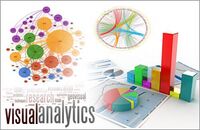Difference between revisions of "Lesson 6"
Jump to navigation
Jump to search
| (One intermediate revision by the same user not shown) | |||
| Line 55: | Line 55: | ||
==Additional Readings== | ==Additional Readings== | ||
| − | * | + | * |
| − | |||
| − | |||
| − | |||
| − | |||
| − | |||
| − | |||
=All About Tableau= | =All About Tableau= | ||
| − | == | + | * [https://www.youtube.com/watch?v=n7lOm3Sor1o Transforming and Visualising Survey Data with Tableau Prep and Tableau] |
| + | * [https://www.youtube.com/watch?v=3fdtxLY29Bg&feature=youtu.be Jump-Starting Visualizing Survey Data Using Tableau] | ||
Latest revision as of 10:28, 11 February 2020
|
|
|
|
|
|
Visualising and Analysing Survey Data
Contents
Content
- Type of Survey Data
- Design Tips for Visualizing Survey Results
- Graphical Methodes for Visualising Survey Data
- Diverging stacked bar chart
- Visualising Uncertainty in Survey Data
Readings
Core Reading
Diverging Stacked Bar Chart
- Design of Diverging Stacked Bar Charts for Likert Scales and Other Applications
- When Are 100% Stacked Bar Graphs Useful?
- The case against diverging stacked bars
- Are diverging 100% stacked bars useless?
- Rethinking the divergent stacked bar chart — placing the stronger views in the center
Additional Readings
